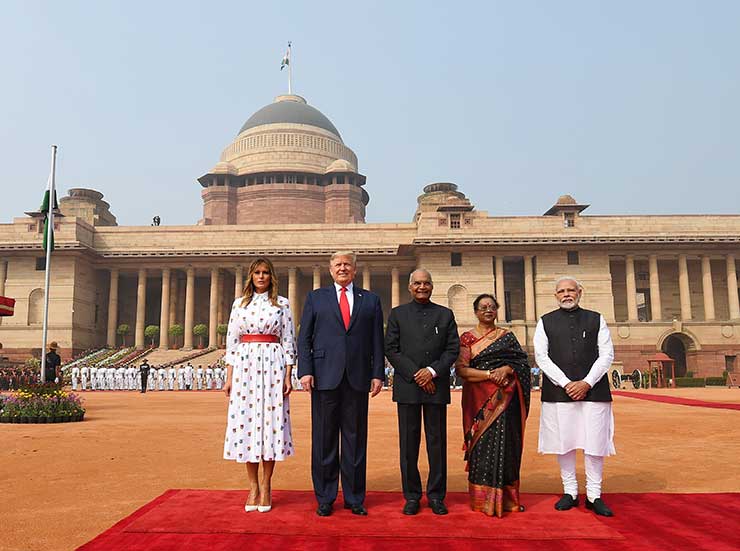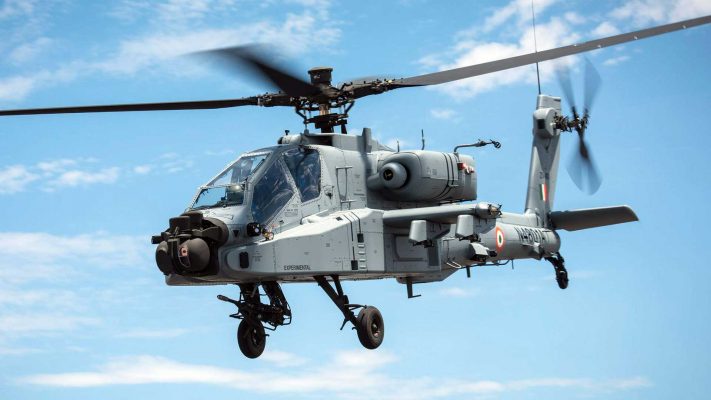
New Delhi. On the face of it, the event at Motera and in Delhi during the two-day whirlwind visit of US President Donald Trump may have seemed to be more of theatrics. However, the fact that President Trump and Prime Minister Narendra Modi have met eight times since Trump came to power in 2017 and the warm hug and handshakes and the two leaders deciding to elevate ties to a “comprehensive global strategic partnership” goes to say much about the growing Indo-US relations.
The 36-hour whirlwind tour of India by Trump and his remark that he would like to come again and again to this country does mark a major step forward in Indo-US relations.
An important aspect of Indo-US relations is that between 1947 to 2000, in 53 years, there were only three visits by US Presidents to India – Dwight Eisenhower in 1959, Richard Nixon in 1969 and Jimmy Carter in 1978.
In the two decades since 2000, there have been four visits by three American presidents – Bill Clinton in 2000, George W Bush in 2006 and Barack Obama in 2010 and 2015 and now Trump as the fifth President to visit this country.
While only three of the nine American Presidents visited this country between 1947 to 2000, every President in the last two decades has visited India at least once.

Clearly this indicates the shift in global geo-politics and the importance that India is given in the American scheme of things and foreign policy. It also shows what value US attaches to India in the post-Cold War era, India’s economic ascent, India as a counter to China and this country’s role in the global high table.
From “Howdy Modi” in Houston last year to “Namaste Trump” at Motera in Ahmedabad, world’s largest cricket stadium, and the American leader declining to comment on the controversial Citizenship Amendment Act and the riots in Delhi saying it was “an internal matter,” indicated the rapport between the two.
What has indeed added a big feather in the cap of Modi is the defence deal announced by Trump which is more than US$3 billion. This would enable India to buy military equipment including MH-60R naval and AH-64E Apache helicopters.
This means India would be getting 24 multi-role MH-60 helicopters costing nearly US$2.2 billion and six Apache helicopters costing about US$800 million.
The six Apache helicopters for the Army are likely to be armed with Stinger air-to-air missiles and Hellfire Longbow air-to-ground missiles and will be deployed along the Indo-Pakistan border.

The joint statement issued after talks by the two leaders of the world’s largest and biggest democracies covered major areas of defence, terrorism, Afghanistan and a response to China’s Belt and Road Initiative (BRI).
However, there is one significant aspect of the joint statement is that there is only one paragraph on the issue of terrorism while making no mention of Comprehensive Convention on International Terrorism (CCIT) which was mentioned in the 2017 statement.
But, the statement includes names of Haqqani network, Tehrik-i-Taliban Pakistan (TTP) as also Pakistan based terrorist groups Lashkar-e-Taiba (LeT), Jaish-e-Mohammed (JeM) and Al-Qaeda which was not there in 2017.
Though Trump did appreciate the role of Pakistan Prime Minister Imran Khan and kept him in good humour with an eye on developments in Afghanistan in the post American withdrawal and the possibility of return of Taliban in the wake of the ongoing talks, but the statement called on Pakistan not to allow its soil to be used by terrorists for launching attacks.
There was indeed much to cheer for India as the statement said that President Trump reaffirmed US support for India’s entry to the Nuclear Suppliers Group (NSG) “without any delay.”
Apart from the joint statement and may be small steps towards trade agreement, what indeed caught the eye was the meticulous planning by the Indian side that has gone into the visit from the moment that the Trumps landed in Ahmedabad and the 22-mile road show to Motera Stadium.
The two leaders appeared to be on a spree of patting each other’s back and showing bonhomie indicating their political future depended on this – for Trump with his eye on the upcoming US Presidential elections and for Modi to get political mileage for Kashmir and Citizenship (Amendment) Act, 2019 (CAA).

Trump avoided taking any questions on the CAA and the riots in the capital which coincided with his visit saying it was an “internal matter.”
Clearly it would be noted around the world in the wake of the growing criticism of the Modi government on handling of the Kashmir issue and the fall out of the CAA. Both leaders are indeed keen on investing in each other’s political success.
One of the major thrust of the joint statement was the early conclusion of the Basic Exchange and Cooperation Agreement (BECA).
Though trade continued to be a thorn and was one of the most important issues for Trump, no agreement could be reached considering the paucity of time but the two countries “agreed to promptly conclude the ongoing negotiations, which they hope can become phase one of a comprehensive bilateral trade agreement.”
However, as Commerce Minister Piyush Goyal said that the two countries have agreed to enter into negotiations for a Free Trade Agreement (FTA).
Goyal said that FTA negotiations would be fast tracked, and he expects a much larger trade deal quickly. He said he has finished nine months in his current position, and a lot of progress has been made.








